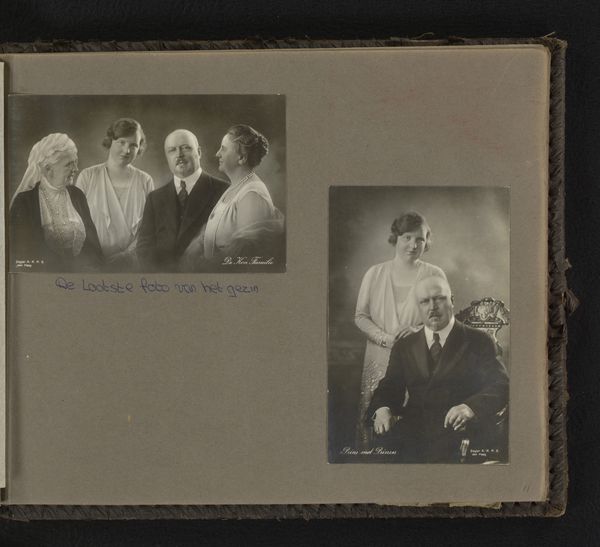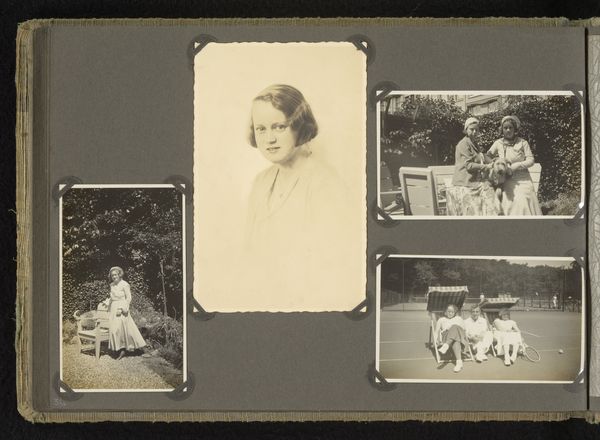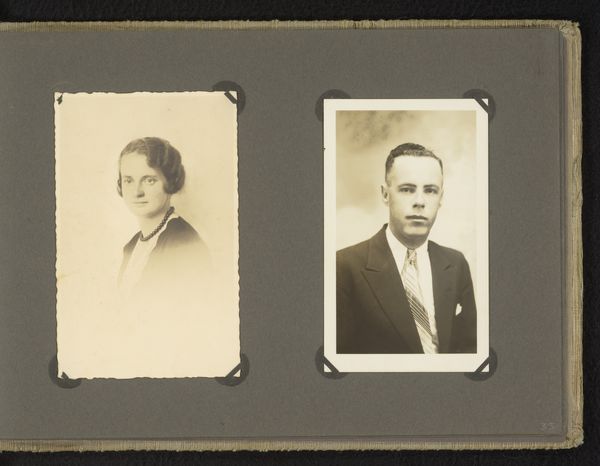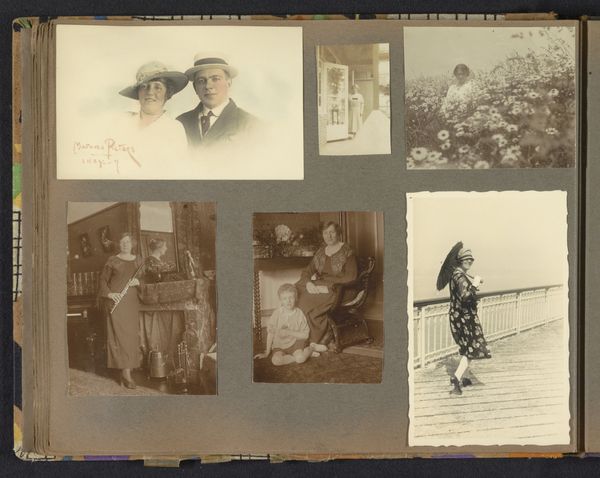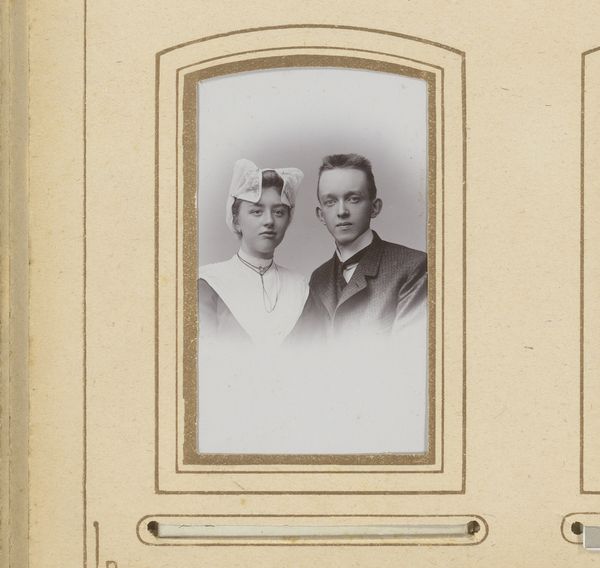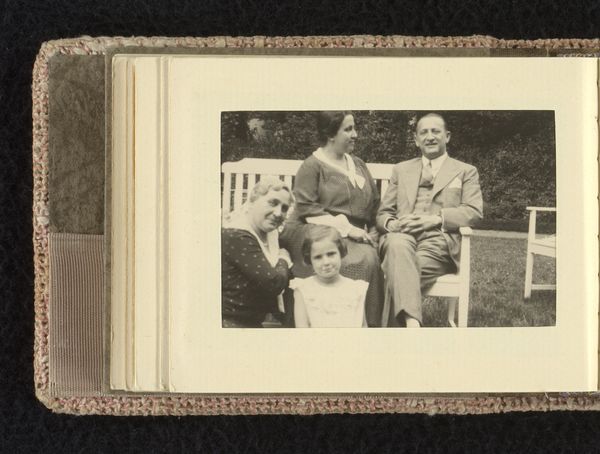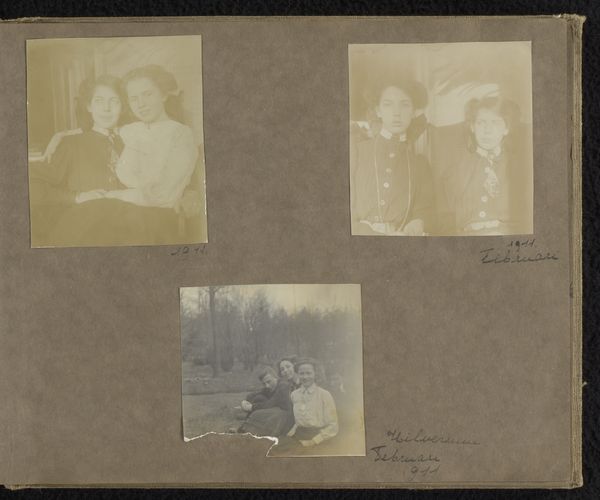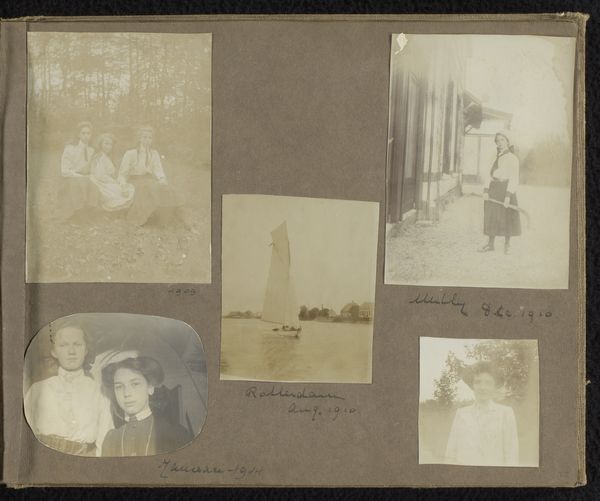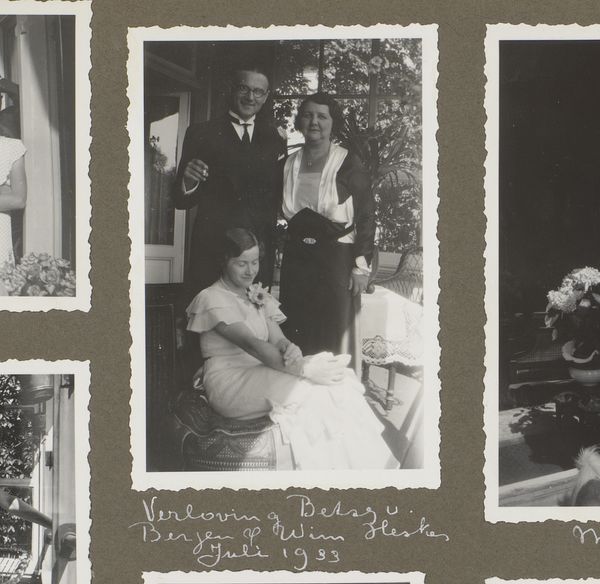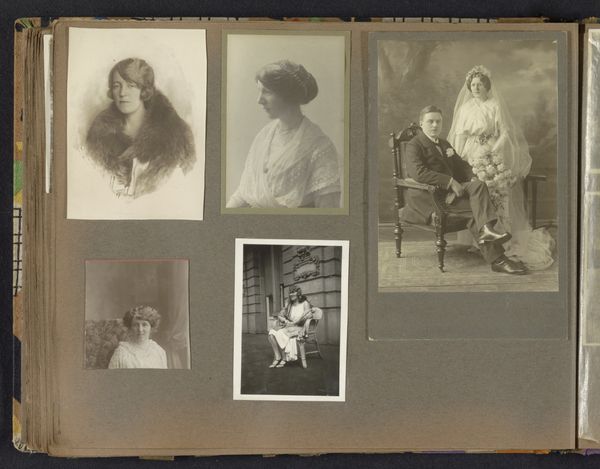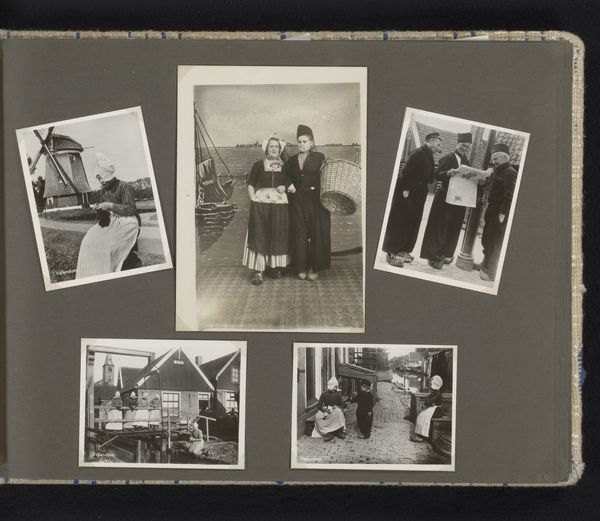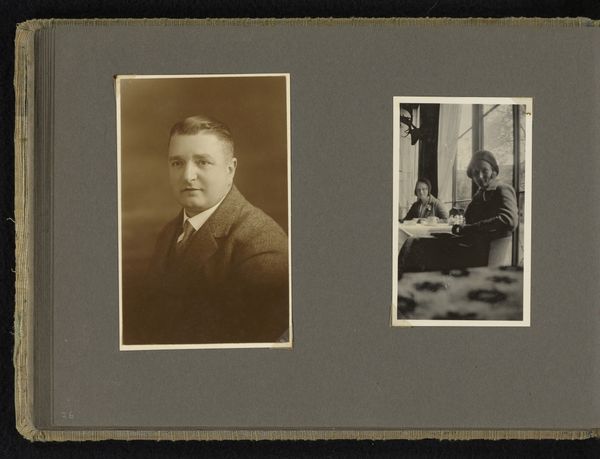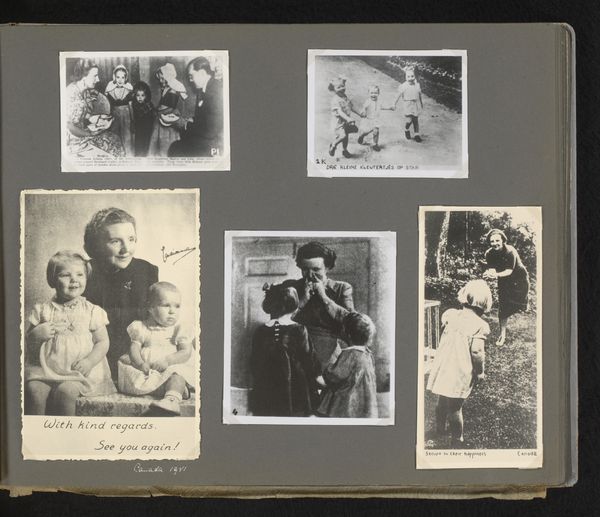
mixed-media, photography, albumen-print
#
portrait
#
mixed-media
#
photography
#
coloured pencil
#
group-portraits
#
mixed media
#
albumen-print
Dimensions: height 235 mm, width 292 mm
Copyright: Rijks Museum: Open Domain
Curator: Welcome! Today we’re looking at a fascinating page from a photograph album simply entitled, "Portretten," which roughly translates to "Portraits," dating from around 1900 to 1925. The piece is composed using mixed media elements that feature an array of albumen prints enhanced with colored pencil detailing. What strikes you immediately? Editor: There’s a real formality in how they are positioned, a posed stiffness almost— yet also, seeing these particular faces all on one spread evokes an intense sense of vulnerability and humanity, caught between social constraint and lived life. Curator: Absolutely. The compositions vary quite intriguingly, don't they? We observe classic portraiture: for example, in the seated figure with an architectural backdrop, but there is another portraying a couple gazing directly at the viewer and this visual combination emphasizes differing relationship dynamics in line and tonal values. Editor: The one of the couple suggests certain levels of expectation around reproduction of the family, as it presents a heteronormative bond central to nationhood and citizenship. The male-centered photograph right beneath the couple shows relaxed patriarchal dominance as the man lays sideways, exuding confidence. Curator: Perhaps. Then look how the use of photography as a medium democratizes representation; there are tonal subtleties added by the photographer using light and shadows that imbue this almost ordinary document of images, a deeper significance. The artist isn't recorded, remaining instead almost entirely hidden, so all there is is the artistry through which to express meaning. Editor: Precisely. How did the photographer grapple with identity and social mores in their portraits? Consider the historical context—the burgeoning conversations around gender roles during the late 19th and early 20th centuries in the Western world, which is certainly where it originated. This photograph exists not only as an object but as evidence that documents individual expressions. Curator: I see what you’re getting at. The formal techniques invite that type of exploration, the juxtaposition of the figures invites closer analysis and even provokes speculation regarding each sitter's social status within early modern Europe. Editor: It certainly moves us beyond formalism and into an understanding of photographic intention that intersects between private experience and public visibility! What a fascinating record of both people, expectations, and history all in one framed page. Curator: A remarkable distillation indeed; let's proceed to the next work.
Comments
No comments
Be the first to comment and join the conversation on the ultimate creative platform.
